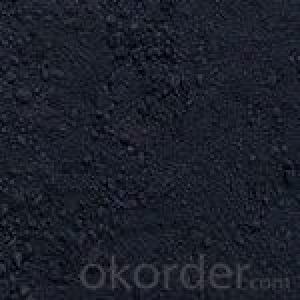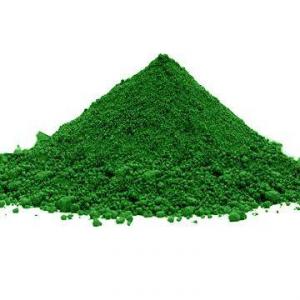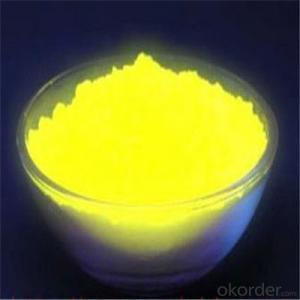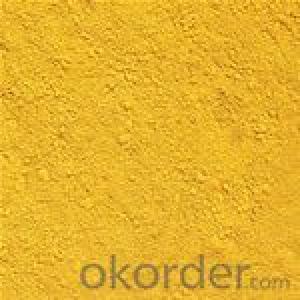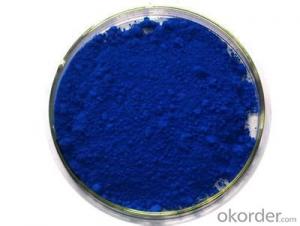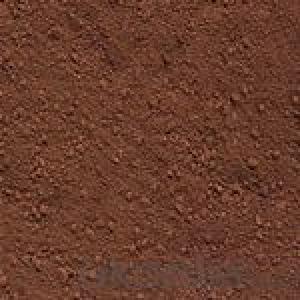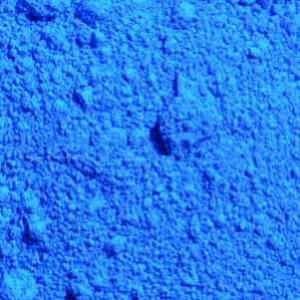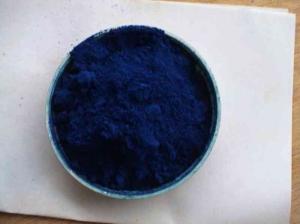iron oxide black pigment Ferric Oxide 722
- Loading Port:
- China Main Port
- Payment Terms:
- TT OR LC
- Min Order Qty:
- -
- Supply Capability:
- -
OKorder Service Pledge
OKorder Financial Service
You Might Also Like
Quick Details
· CAS No.: 1309-37-1;1317-60-8;1332-37-2
· Other Names: Ferric Oxide
· MF: Fe3O4
· EINECS No.: 215-168-2;215-275-4;215-570-8
· Place of Origin: (Mainland)
· Usage: Ceramic Pigments, Coating Pigment, Cosmetic Pigment, Ink Pigments, Plastic & Rubber Pigment, Leather Pigments, cement/concrete parts pigments
· Model Number: 722
· Type: Iron Oxide
· Style: Inorganic Pigment
· Product Name: iron oxide black pigment
· Color: black
· Type: 722
· Fe2O3 component: from 88% to 98%
· Moisture: black,brown <1.5% red,yellow,green<1%
· PH value: 5-8
· Apparent Density: 0.7g/cm^3-1.1 g/cm^3
· Particle shape: spherical,irregular,acicular
· Inspection/certification: SGS,CIQ,BV,Asia Inspection
· Package: pp or colored valve or super bags
Packaging & Delivery
Packaging Details: | 1. 25kgs thermo-fusible bags 2. 25kgs paper bag with plastic inner 3. 25kgs colored valve bag 4. 600kgs or 1000kgs super or jumbo bags 5. 1 tons or 1.25 tons wooden pallet 6. other customized package like the drum etc |
Delivery Detail: | within 15-20 days after signing the contract |
Specifications
iron oxide black pigment
1.red/yellow/blue/green/brown
2.SGS/BV/ISO9001 inspected
3. tinting strength>95%
4. chromatism<1
1: Brief introduction of the iron oxide pigment:
The Iron oxide pigment is made by iron, hydrochloric acid, sodium hydroxide which is adopted wet processing method...
As the most important inorganic colorant, the iron oxide pigment is characterized with strong tinting strength,easy
dispersibility,excellent fastness and good weather resistant, it is widely used in the concrete roofing tile,paver,
stucco,masonary,paint,coating,rubber, plastic,paper and leather industries...
2. The technique data and specification of the iron oxide pigment:
Item | Index |
Primary color |
|
Diluted color |
|
Iron content (Fe3O4) 105℃ drying%≥ | 95 |
Fineness (325 mesh wet sieve residue)%≤ | 0.5 |
Oil absorption, g/100g | 15-25 |
Moisture & 105℃ volatile% | 1.5 |
Water solubles% ≤ | 0.5 |
Water suspended matter PH value | 4-6 |
Relative tinting strength (compared with standard sample%) ≥ | 100± |
3. The application of the Iron oxide pigments:
A: Iron oxide pigment is used as dye or colorant in various prefabricated concrete parts and architectural products and material,
it is directly added into cement to color up various indoor and outdoor cement surface, for example: wall,terrances,ceilings,
pillars,corridors,roads, car-parking stairs as well as building ceramic and glazed ceramics.. like facing bricks, floor tile, roofing
tiles,panels,terrazzo,mosaic tiles,artificial marbles,etc...
B: Iron oxide pigment is also applicalbe to different coating and protetive materials, including water-based exterior wall paint,
and powder coating, as well as to oil paints. such as epoxy,alkyd,amidogen, and some other primier and finish paint.. it can be
used in toy paints,decorative paints,furniture lacuquers,electrophoresis paints, and enameled paints,etc..
C:Iron oxide pigment is also used coloring material for plastic products like the thermosetting plastic and thermoplasstic,
as well as in rubber products, such as tyre tubes for bycle,automobile,etc..
4. The package and transporation, loading conditions of the Iron oxide pigments:
A: The package of Iron oxide pigment:
a:25kgs thermo-fusible bags
b:25kgs paper bag with plastic inner
c:25kgs colored valved bag
d:600kgs or 1000kgs super or jumbo bags
e:1 ton or 1.25 tons wooden pallet
f:other customized package like the drums etc..
B: The quantity of each iron oxide pigments can be loaded:
a: Iron oxide red 25kgs craft paper bags, 22 MT per 20ft container
b: Iron oxide yellow 25kgs craft paper bags, 13MT per 20ft container
c: Iron oxide black 25kgs craft paper bags, 20MT per 20ft container
5. Why choose us as the supplier of the iron oxide pigments:
A: Professional:
21 years experieance focusing on pigment industry, professional guide and throughly market analysis..
B: Quality control:
high quality raw material, advanced equipment, accept SGS,BV,Asia inspection, ISO9001 certification..
C: Competitive price:
strictly control the production cost, factory producing, lower product profit strategy
D: Best service:
quick delivery time, 24 hours quick response, quick reaction for any questions or problems
E: Sample free:
All sample is free, customer just need to pay the charges of express, when the sample is qualified,
will pay back the sample express fees back from trial order..
G: Good credit:
attend the china internal coating exibiton held in guangzhou and shanghai
6. The situation of our customers :
We only focus on pigments,especially inorganic pigments including iron oxide pigment, chrome yellow and
orange,XD titanium pigments, new iron titanium anticorrosion powder.. we got ISO9001certification and accept
SGS,BV,Asia inspection or other third party inspection before shipment..
We has been exported our goods to south korea, malaysia,Russia,Somalia,Ethiopia,
America,Brazil,Central asia for good quality and best credit...
7. Other informations:
A:Moq: 5 Tons
B:Payment Term: TT or L/C sight
C: H.S code: 2821100000
- Q: Why do algae contain pigments other than just chlorophyll?
- To use other wavelengths to perform photosynthesis.
- Q: i would like to now so i could put it in a marker thanks..
- Isn't all ink pigmented? A quick search for make your own ink turned up many recipes. Here is one: Basic Permanent Black Ink: 1 egg yolk 1 tsp gum arabic 1/2 cup honey 1/2 tsp lamp black (buy in a tube or make by holding a plate over a lit candle) Mix egg yolk, gum arabic and honey in a small bowl.
- Q: explain an absorption spectrum of different pigments and the action spectrum ofphotosynthesis.
- A pigment is any substance that absorbs light. The color of the pigment comes from the wavelengths of light reflected (in other words, those not absorbed). Chlorophyll, the green pigment common to all photosynthetic cells, absorbs all wavelengths of visible light except green, which it reflects to be detected by our eyes. Black pigments absorb all of the wavelengths that strike them. White pigments/lighter colors reflect all or almost all of the energy striking them. Pigments have their own characteristic absorption spectra. The action spectrum of photosynthesis is the relative effectiveness of different wavelengths of light at generating electrons. If a pigment absorbs light energy, one of three things will occur. Energy is dissipated as heat. The energy may be emitted immediately as a longer wavelength, a phenomenon known as fluorescence. Energy may trigger a chemical reaction, as in photosynthesis. Chlorophyll only triggers a chemical reaction when it is associated with proteins embedded in a membrane (as in a chloroplast) The familiar colors of the rainbow in the spectrum include all those colors that can be produced by visible light of a single wavelength only, the pure spectral or monochromatic colors.
- Q: How to manufacture FRP pigments?
- Pigment A finely divided material which contributes to optical and other properties of paint, finishes, and coatings. Pigments are insoluble in the coating material, whereas dyes dissolve in and color the coating. Pigments are mechanically mixed with the coating and are deposited when the coating dries. Their physical properties generally are not changed by incorporation in and deposition from the vehicle. Pigments may be classified according to composition (inorganic or organic) or by source (natural or synthetic). However, the most useful classification is by color (white, transparent, or colored) and by function. Special pigments include anticorrosive, metallic, and luminous pigments. See also Dye; Luminous paint; Paint.
- Q: wut is the diff between those 2?
- pigments are loose powder i believe. i like the eyeshadows better. there's a much better selection of those anyway.
- Q: How are plant pigments like teammates on a sports team? And What is the goal of their teamwork??
- WELL to be exact cuvette 2: to observe the role of photosynthesis with chromatin cuvette 3: to observe the role of photosynthesis with UV rays cuvette 4: to observe the stability of the chloroplasts cuvette 5: to observe the reaction of the H2O synthesis
- Q: Pleaseeeeee answer A.S.A.P Pleaseeee! Are pigments haram?
- Most pigments for dyes and paints come from plants or minerals. What exactly do you need? The second part of your question about haram, needs some explanation, too.
- Q: We see pigments everywhere in products. They make a variety of things we see today. Where does it come from? Do they actually take a red rose pedal, grind the color and designate it as the color red?
- Pigments come from many sources, and often the name of the color indicates the source. For example, lead white, titanium white and zinc white are lead, titanium and zinc oxides. Cobalt blue is a compound of cobalt. Many pigments are found in nature from minerals, plants and insects. Many more are produced in the laboratory and have chemical names such as the analine dyes.
- Q: what is the difference between light color and pigment colors?
- Pigments are chemicals that selectively absorb and reflect different spectra of light. When a surface is painted with a pigment, light hitting the surface is reflected, minus some wavelengths. This subtraction of wavelengths produces the appearance of different colors. Most paints are a blend of several chemical pigments, intended to produce a reflection of a given color.
- Q: So i'm writing up a lab report and i'm just a little confused on why scarlet, rosy, cinnabar and vermillion mutants contain the same kinds and amounts of pigments found in wild-type according to paper chromatography. Since they're mutants shouldn't it be different? I don't understand how i'm going to explain that they are mutants when it appears that they have the same phenotype as wild-type. Thank you so much for your help!
- Man pigments determine the colour of the eye. If the composition of pigments is same in all the flies,how can the colour in which their eyes look differ?isn't this a contradiction?i suspect the accuracy of The chromatography test because even a very very slight change in the amount of pigment can significantly change the colour. The phenotype is always different in mutants due to different genotype. in genotype is taken for granted if a change in phenotype is present. Wait just got over into a nice point. Sometimes even if the pigment composition being same different colours m8 be produced due to different allotropes or iro of the same pigment might have different colours!though allotropes(not isomers) have same composition but differ in,their post translational changes r different.since post translational changes r indirectly influenced by genes.this completely explains this case.
Send your message to us
iron oxide black pigment Ferric Oxide 722
- Loading Port:
- China Main Port
- Payment Terms:
- TT OR LC
- Min Order Qty:
- -
- Supply Capability:
- -
OKorder Service Pledge
OKorder Financial Service
Similar products
Hot products
Hot Searches
Related keywords
